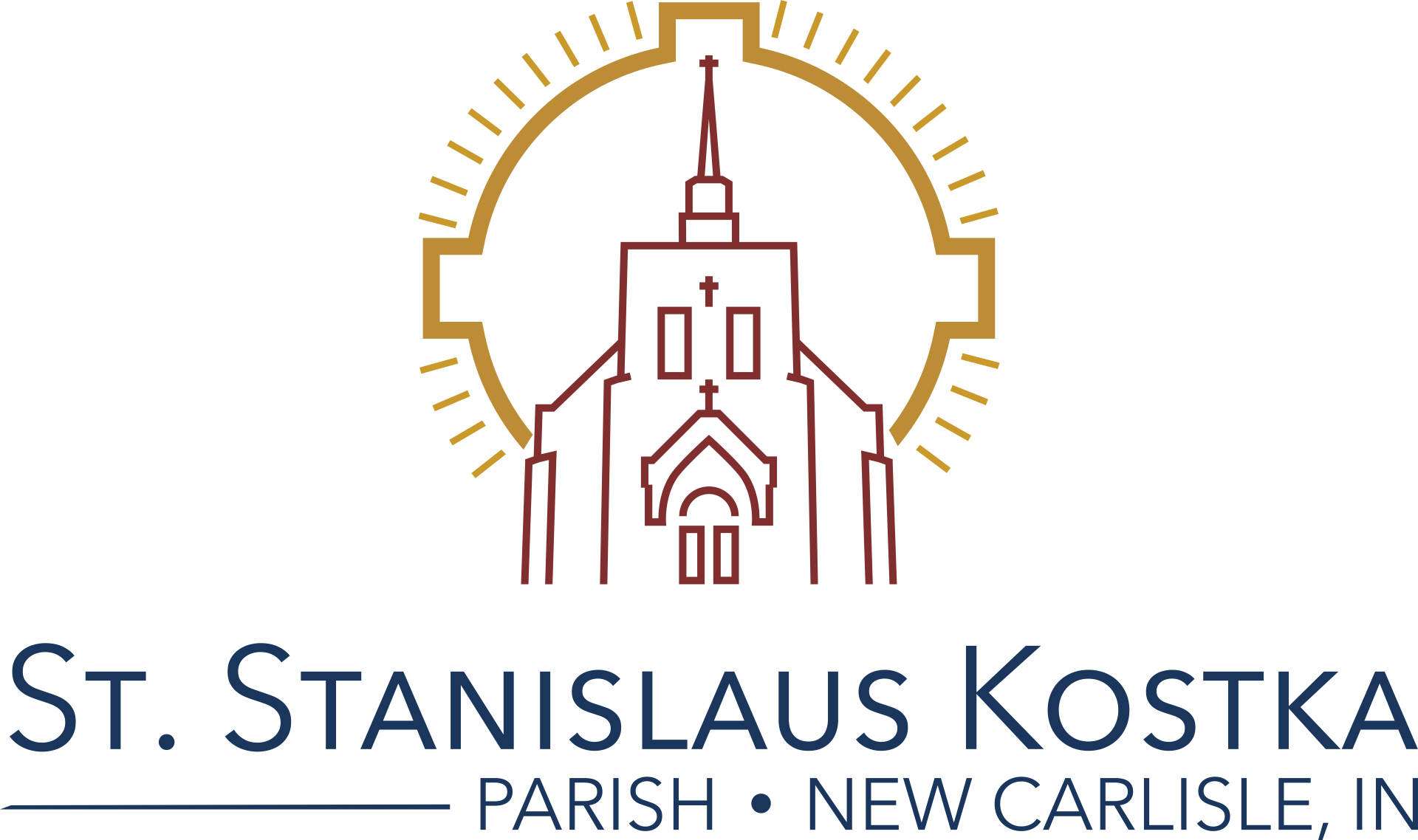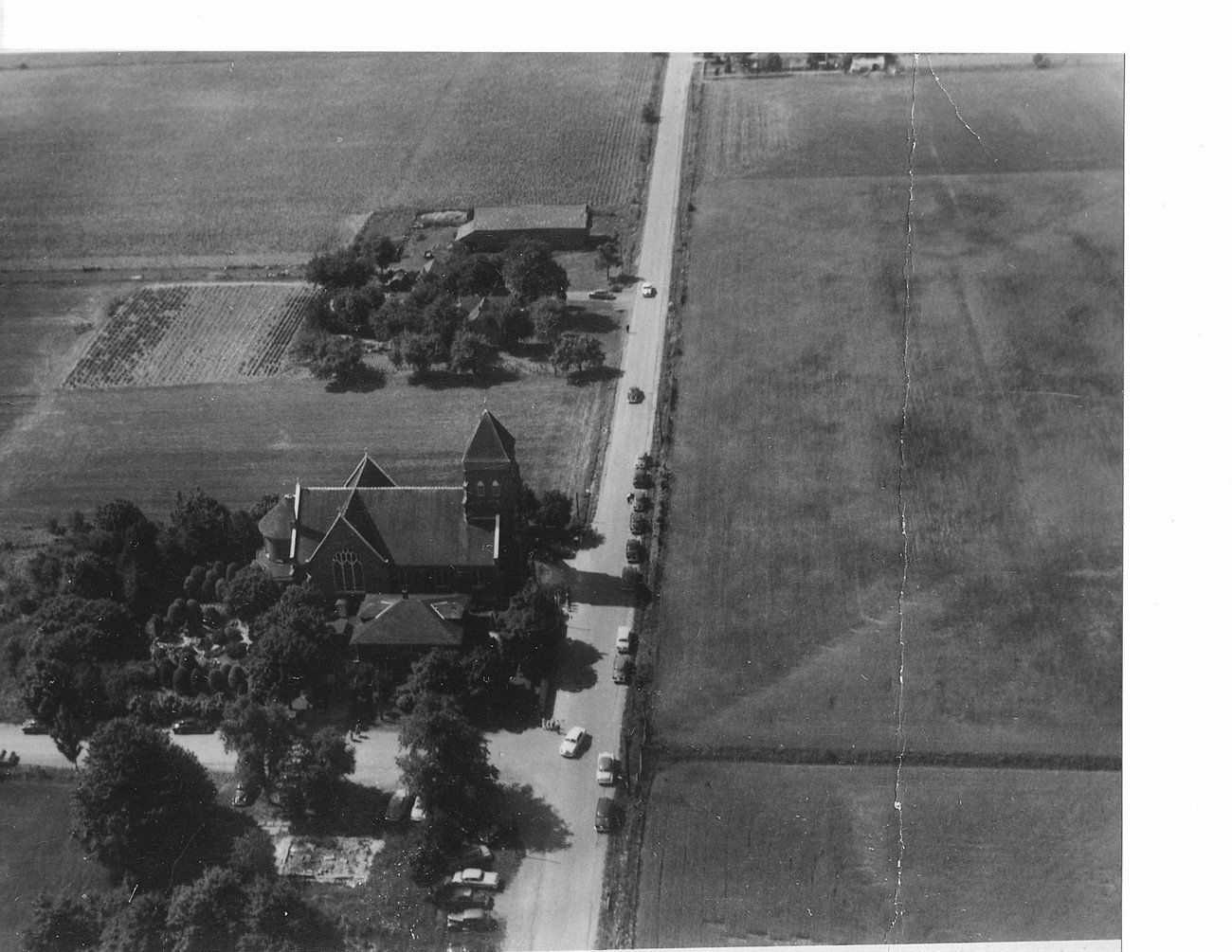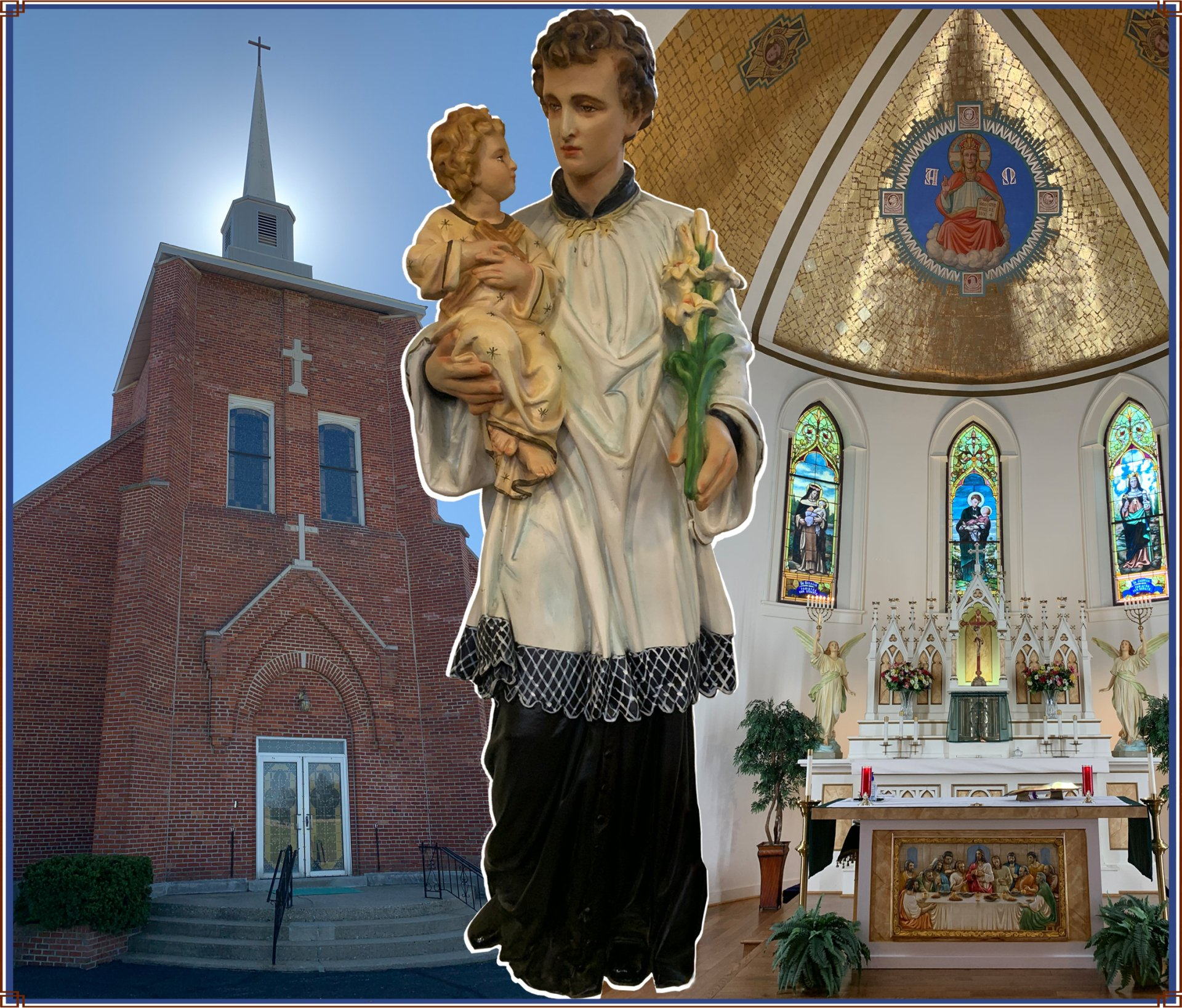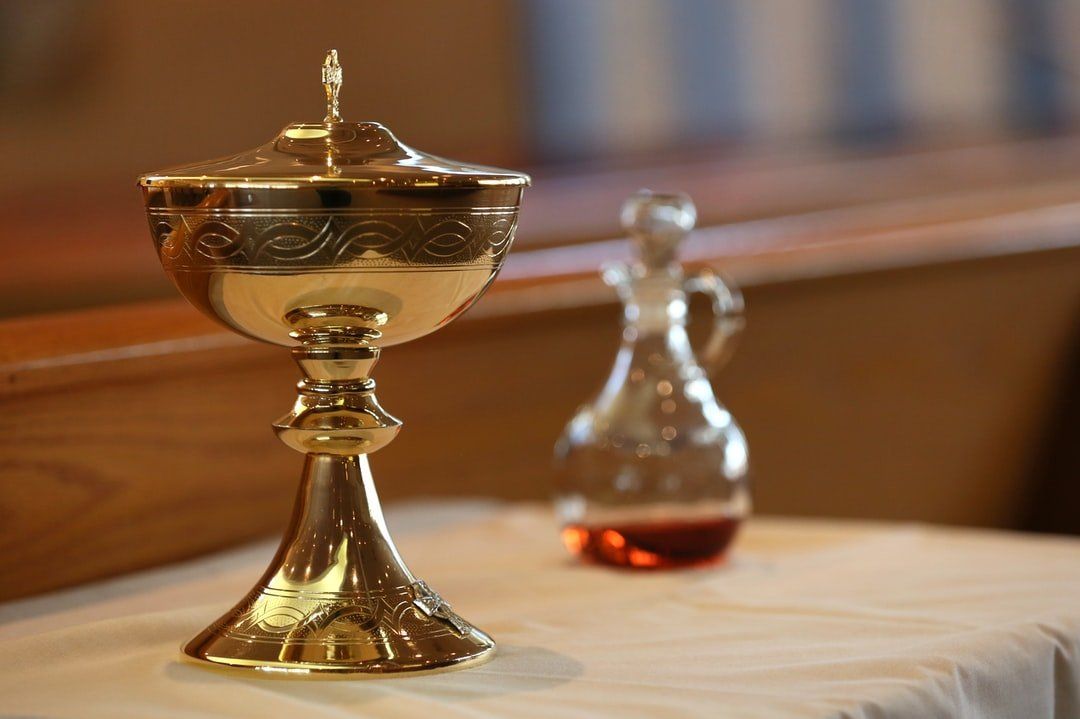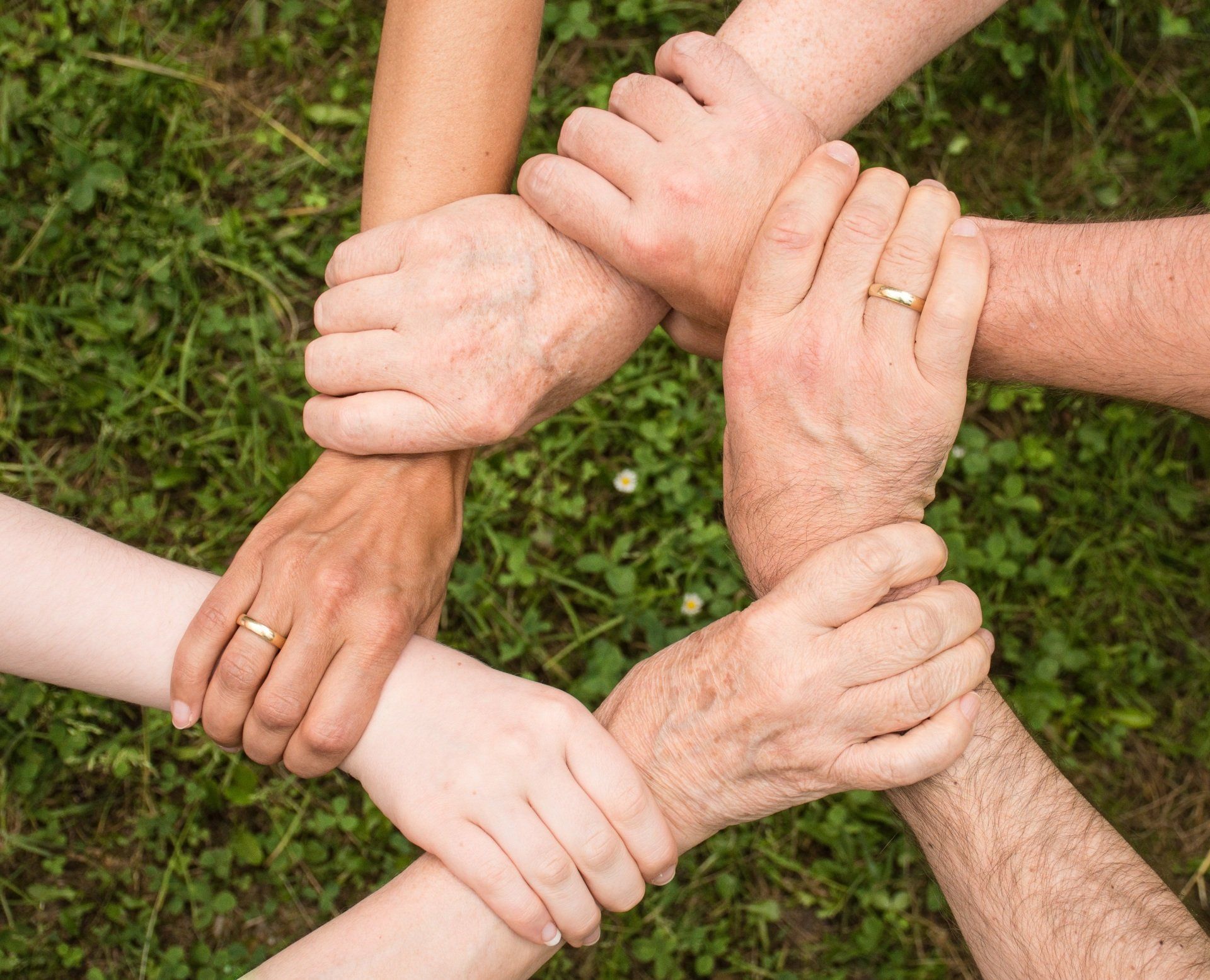Our heritage begins in October 1884…
In French, Terre Coupee means “land cut off.” Terre Coupee was the name given originally to an expansive prairie. Later, the name was bestowed upon a small town and its railroad station.
Attending church in those early days was difficult for Terre Coupee Catholics. The distance and road conditions (especially in winter) were not conducive to weekly worship. St. Hedwig, St. Joseph, both in South Bend, or St. Mary’s in Otis were the only churches nearby. According to the centennial book of St. Mary’s, between 1870 and 1875, Rev. Francis X. Szulak of the Society of Jesus visited Terre Coupee. He celebrated Mass in the woods or in log cabins of the Lawrence Mackowski, John Gondek and Delecki families. Fr. Szulak also said Mass on alternate weekends in Rolling Prairie.
Father Valentine Czyzewski, pastor of St. Hedwig, established the church for Terre Coupee in 1884. He undoubtedly was the one who selected the boy saint, St. Stanislaus Kostka, as the patron saint for the new church in Terre Coupee. The cornerstone was dedicated on Sunday, August 31, 1884. The 60’ x 30’ wood frame structure was built on the land which is the parking lot north of the present church. The land was donated by Lawrence and Mary Mackowski to Bishop Joseph Dwenger for one dollar. The deed was written on September 12, 1884.
Donation was the key word to the newly founded church. Sawmill owner Fred Miller donated the lumber and parishioners donated their time to haul the lumber and to construct the church. The total cost was $1,800. It was dedicated on Sunday, October 12, 1884. In addition to Father Czyzewski, Father Michael Lauth, CSC, and Father Alexander Kirsch, CSC, traveled from South Bend and Notre Dame to say Mass at the new parish. The church was used as a school for the children of the parish.
St. Stanislaus Kostka was without a resident pastor until 1888 when Rev. Wladyslaw Zborowski of the Fort Wayne Diocese was assigned. St. John Cantius in Rolling Prairie was also assigned to this mission. On March 25, 1889, Fr. Zborowski then purchased from Jacob and Antoine Mackowski, an acre and a half for $187.50. In 1889, with the help of his parishioners, he built a rectory and moved in on January 1, 1890. In April of 1890 Rev Wladyslaw Zborowski, at the young age of 29, died of pneumonia. After his death, Rev. Zubowiz from St. Hedwig’s took care of the parish.
Father Alexander Buechler was named pastor on May 1, 1901. The church had grown from 30 families to 126 families and the community was outgrowing the small frame church. On Sunday, August 30, 1903, a cornerstone for a new church was laid. By 1904 the walls were erected. The brickwork, roof and finishing touches were applied in 1906. Much of the construction of the Gothic-style church was done by dedicated parishioners. Quite a few children also helped, riding with their parents on wagons and helping load and unload brick and stone that had been delivered to the railroad stations. Some construction materials were hauled in from as far away as Plymouth. The large windows on both the north side and the south side were brought by one of the parishioners from Michigan City by horse and wagon. The stained glass windows behind the altar were installed before the church was dedicated. In addition to building the church, Fr. Buechler organized the Men’s Sodality with a membership of 50, the Ladies Rosary Society with 45, and the Young Ladies with membership of 40.
The old wooden church served as a school until it was destroyed by fire in 1908. In the fall of 1910, the parish bought the No. 5 Public School from Olive Township and moved it to the foundation of the old church. The No. 5 Building was roughly a quarter mile north of the present church on Tulip Road. The church school was in session until 1925.
A quick succession of priests followed Father Buechler who left in 1908. Father Peter Budnick, Father Julian Skrzypinski and Father Ladislaus Szczukowski spent about a year each in the parish. Father Michael Swiatkowski arrived in 1918. He had a rectory built and also wired the church for electricity. In 1929 he was replaced by Father Julian Doktor who remained until April of 1932.
Father John Wroblewski was appointed pastor in 1932 and remained here for 25 years. Improvements were made, the electrical system was updated, coal burning furnaces were changed to oil, the church was reroofed and the interior of the church was painted. In the early 1940’s, Father John Wroblewski began to create his pride and joy, the rock garden behind the rectory, which later became the Grotto we know today.
In 1947 six stained glass windows were added to the church. Four other windows were donated at the same time: on the left side of the church “In memory of Joseph S. and Mary E. Wroblewski family of South Bend and Sgt. Joseph Kuspa who died in WWII; on the right “In memory of St. Anthony’s Club of St. Stan’s, and in memory of Pvt. Stanley C. Wichlacz who died in WWII.”
Father Thomas Depa, was named pastor of St. Stanislaus in 1956. Fr. Depa took an active role in the church’s life from the beginning of his tenure. A board of parish trustees was named in 1956. The area that became the parking lot to the south was purchased from Ted and Helen Mackowski in 1957. Father Depa said many people told him to have a new church built closer to New Carlisle. However, rather than building, a remodeling process began. After buckets were placed in the aisles to collect rainwater, the church was reroofed and tuck pointed. The facelift continued for years. A new floor was laid. The church expanded on three sides: the back entrance from the rectory the side entrance and the canopy and front stone planters were built.
For the Diamond Anniversary, four more stained glass windows were donated. A parish hall was needed from the time the old hall was dismantled. With the concerted effort of parishioners plus the funds from 18 chicken dinners at the PNA, the groundbreaking for the $70K hall was held on June 23, 1963. The land was donated by Ted & Helen Mackowski. The 113’ x 60’ hall was completed in the spring of 1964.
The church again needed remodeling attention in 1968. The old steeple had termites and developed leaks. Falling plaster became a hazardous sideline of singing in the choir. A new 37 square foot, four ton, fiberglass steeple was lifted into place on October 11, 1968. In 1974 Father Depa was assigned to Holy Family Parish.
Father Thaddeus Kwak became pastor and, once again, the parish needed some updating. Father Kwak remodeled the sacristies with new cabinets and carpeting and transformed the former usher’s room into a reconciliation room. After a few years, Fr. Gieranowski saw the need to add a small chapel connecting the rectory to the north side of the church. This was evident as the cold winter mornings made it difficult to warm the church for the parishioners attending daily Mass. The chapel, which can seat fifteen people, and restrooms were added at a cost of $30K and completed in the late spring of 1980. The combination chair-kneelers were partially paid for with the balance of funds that the former trustees had raised from social events. Bishop Joseph R. Crowley blessed the altar on September 15, 1982, and presided at the liturgy the same day. Father Gieranowski retired in 1981 to be replaced by Fr. Derrick Sneyd.
Bishop William McManus formally installed Fr. Sneyd as pastor on July 19, 1981. Immediately Fr. Sneyd took the first comprehensive census of the St. Stanislaus Kostka Community. He began to study the parish community and, by the end of his first fall, some of his plans were beginning to take shape. It was not until the spring of 1982 that the plans were implemented. On Holy Thursday 1982, the first group of 22, special ministers of Holy Communion were commissioned since then their numbers have increased and their service has become invaluable.
Over the years there was much talk of renovating and expanding the present hall. Fr. Sneyd observed that the expansion was necessary, but only part of the plan. The hall was being used and sectioned by movable partitions for the religious education of grade and high school classes. Anxious to provide a classroom atmosphere that would be conducive to the program, Fr. Sneyd incorporated this thinking into the plans for renovation.
On April 24, 1983, Bishop McManus officiated over the groundbreaking for the hall remodeling and Religious Education center. The 10 a.m. Mass was well attended by the parish community and most of the 165 children were present for the day. Work immediately began on the addition to the hall, which included washrooms, storage rooms, and an enlarged bar, foyer and cloak room, which was completed in May, 1983. Shortly thereafter, work began on the Religious Ed. Center, which was to be completed in time for the opening of classes in the fall. It was completed on time, but not without mishap. On July 2, 50 m.p.h. winds toppled the rafters that were all set to receive a roof. The contractor and architect had to work long hours and Saturdays to finish the project on time. The 6,000 square foot, nine classroom facility was complete in mid-September of 1983.
The next step was to turn to the church’s “Centennial”. Committees were formed for the centennial publication, a parish cookbook, festivals, banquets, restoration of the church, and a Centennial Mass celebration was attended by former Pastors all under Fr. Sneyd’s leadership.
In 1988, Fr. Robert Hammond was made pastor of the church. Although his health allowed for only a brief stay, air conditioning was installed for the comfort of the parishioners in the hot summer months.
The summer of 1993 saw the arrival of Fr. Gene Kazmierczak and his 88 year old mother, Anna. Major repairs and extensive improvements to the church and grounds kept the parish a beehive of activity. In the late winter of 1994, Fr. Gene, along with the parish council, made a commitment to open a school at St. Stan’s after a hiatus of nearly 100 years. In the summer of 1995, Fr. Gene announced the appointment of Mrs. Jen Sosinski as the very first teacher of the new St. Stanislaus Kostka School, with Mrs. Joy Lach appointed as teaching assistant. On September 11, 1995 the school officially opened with 15 students in the pre-school program.
In July 2002, Fr. Jan Klimczyk became pastor of St. Stan’s and immediately began working on the upkeep of the parish buildings. All the buildings were reroofed, the interior of the church was painted, and carpeting surrounding the altar was replaced with a hardwood floor. He commissioned a woodcarver he knew in Poland to carve the Last Supper (currently on the altar). Fr. Jan traveled to Poland to bring this carving home to St. Stanislaus Kostka.
In July 2007 Father Paul arrived at St. Stan’s. Fr. Paul maked a concerted effort to see that the spiritual needs of those parishioners who are homebound or in specialized care facilities are a part of the church family. He maked weekly visits and brought the sacraments to those who were not able to attend Mass. In later years of his pastorate, Fr. Paul was faced with the need to update the physical facilities of the parish. The church, rectory, education and social centers all received attention and benefited from his open attitude with the parish community and sound budgetary practices. Projects such as: tuck pointing, a new mound septic system, new lighting (rewiring) in the church, new sound system, detailed painting of the altar, the woodcarving of the Last Supper and the stands for the statues of the Blessed Mother and St. Joseph were completed. With the help of several donations a communion rail was installed. Through Father Paul’s strong leadership and commitment to the parish, St. Stan’s continued to grow and thrive to nearly 300 families and remained a vital part of a rapidly expanding community.
Fr. Robert Garrow was appointed by Bishop Kevin Rhoades in June of 2020, during the middle of the COVID-19 Pandimic. Upon arrival, Fr. Garrow began to reestablish the pastoral council and finance council. Additionally, repair and upgrades to the facility were also addressed. A few projects completed in the first year included the 6 stain glass windows in the chuch, a new church roof installed, the instilation of LED lighting in the chuch, the movement of the parish offices, as well upgrades in internet and the parish phone lines. In May of 2021 a new Pastoral Priority Plan was announced, with a focus on evangelization, catechesis, and the physical grounds. During Fr. Garrow's time $541,000 was invested in vast improvements to the facilities.
In July 2024 Fr. Brian Carpenter was appointed the Administrator of the parish. He was appointed the Pastor in Sept 2025.
We can better appreciate the beauty of the interior and exterior of the church when we think of the hard work, sacrifice and faith of our ancestors. It must be remembered when this church was built that no modern machinery, no electricity, no automobiles, none of the conveniences we have today were available. The pastors and parishioners of this parish throughout the past 138 years had something greater – a very deep love of God… and building this parish was one of the best ways of showing Him their faith and dedication.
